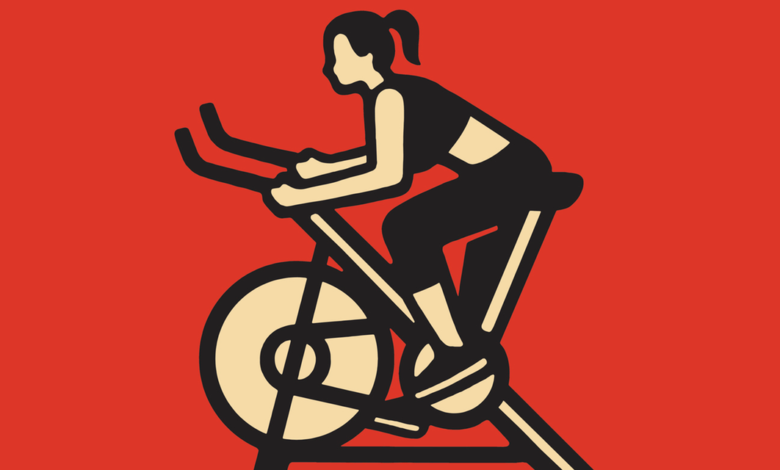What to Know About Doing Cardio If You Have Heart Problems

You’ve probably heard that regular exercise—whether you’re walking, jogging, riding a bike, or hopping on an elliptical—can help protect your heart. But what about if you already have a cardiovascular condition? Should you rethink your workout?
Decades ago, the answer was yes: Doctors used to recommend as much rest as possible for people with heart problems. Now, cardiologists understand just how important staying active is, both for improving your quality of life and possibly even for lengthening it.1
So for the majority of people with heart issues, physical activity is not only not off the table, but actively encouraged. “You don’t need to stop exercising unless specifically advised to do so by your doctor,” Yu-Ming Ni, MD, a cardiologist at MemorialCare Heart and Vascular Institute at Orange Coast Medical Center in California, tells SELF. This holds true for people with many types of cardiovascular concerns, including high blood pressure, heart failure, atrial fibrillation, and lots of others, he says. (If you have myocarditis—an inflammation of the heart often caused by a viral infection—you will have to wait until it eases, though.) That said, there are some things you should keep in mind if you want to do cardio after your diagnosis. Here’s what you should know.
Exercise simply helps your heart work better, regardless of what’s going on with your heart.
You’ve likely heard that the heart is a muscle—true fact!—so, like any other one, its strength and function improve through physical activity, according to the National Library of Medicine.
Exercise can also lower your blood pressure and improve your cholesterol levels, Nicole Weinberg, MD, a cardiologist at Providence Saint John’s Health Center in California, tells SELF. That’s important because when your BP gets too high, it can damage your arteries, making them stiffer and allowing less blood to flow to the heart—potentially increasing your chances of a heart attack or heart failure, according to the Centers for Disease Control and Prevention (CDC). High cholesterol can also be risky since it can lead to plaque buildup in your arteries, which can block blood from getting to that all-important muscle. Exercise, though, can help it flow more easily.
The result? More oxygenated blood circulates throughout your entire body, Dr. Weinberg says. This helps support everything from your brain health to your immune function, in addition to your heart, she adds.
These benefits hold true for people who have never had a heart issue and for those with a diagnosis. But it’s important to emphasize the latter: Exercise plays a protective role even if you already have a heart condition. It can lower your resting heart rate, improve how your blood vessels respond to physical activity, and even reduce inflammation in them, all of which can help slow the progression of cardiovascular disease and prevent its recurrence.2
Basically, if you have a heart condition, “you’re not playing it safe by resting all the time,” Dr. Weinberg says. You might have to take more precautions when you want to get active than someone without heart disease, but “the main message here is that it’s worth the effort,” she says.
So what’s the safest way to do cardio if you have a heart condition?
Before you lace up your jogging shoes or dig your bike out of the garage, the first thing you should do is check in with your doctor if you want to start a new exercise program, get back to a previous routine, or ramp up your workouts, Sirish Vullaganti, MD, the director of heart failure at Northwell Lenox Hill Hospital in New York City, tells SELF.
Depending on your symptoms, they may want to perform a cardiac stress test—for which you’ll simply walk or run on a treadmill or ride a stationary bike—to monitor your heart to see how it responds to changing intensity or increases in workload. This can yield important info, such as a target heart rate range that can help determine what level of exercise is safe for you, Dr. Vullaganti says. It’ll also help your doctor learn how well your heart is pumping blood and if it’s receiving enough of it while your muscles are working.
Once you’re cleared to begin exercise, then you can decide what you want to do. While the term “cardio” tends to conjure up images of intense workouts—a tough HIIT class, going full throttle on the elliptical, or a spin session that’s all hills and sprints—it actually encompasses all kinds of aerobic activity. Cardio refers to any repetitive movement by the big muscles in your body (like your arms and legs) that gets your heart pumping. This could include bootcamps that leave you drenched in sweat (again, if your doctor says you’re in the clear), but it doesn’t need to: Walking, easy cycling, or rowing all count too.
And you don’t need to max out your heart rate to reap the benefits of exercise, either—in fact, you shouldn’t go all-out right off the bat, Dr. Weinberg says. A better starting point? Brisk walking, she suggests. That will increase your heart rate slightly, which builds strength in your heart muscle, improves blood flow, and can lower blood pressure. This gradual approach is important, since your heart needs to be slowly conditioned over time to safely take on more work, she adds.
While everyone is different based on the severity of their heart issues and overall fitness level, starting with a modest amount of exercise—say, a 15-minute walk daily for a few weeks—can help you develop a baseline, says Dr. Weinberg. Then you can build in duration from there.
At that point, you don’t necessarily have to stick to the steady-state stuff. Dr. Weinberg says short bursts of activity interspersed with longer rests may be appropriate too. For example: pickleball, tennis, kayaking, or rock climbing.
All of this doesn’t mean you have to skip HIIT or forget about your treadmill or elliptical, according to Dr. Weinberg. Gradual and thoughtful progression is the key here.
“The advice to ‘listen to your body’ may be standard by now, but it’s still worth repeating,” she says, adding that safe progression will also involve regularly checking in with your doctor.
Keep these tips in mind for your cardio session.
Before you jump into your routine, you should always do a proper warm-up, even if you’re short on time, Jesse Grund, CSCS, owner of Unconventional Strength in Orlando who works with clients with heart conditions, tells SELF. He recommends at least 10 minutes of easy exercise like brisk walking or dynamic bodyweight moves like squats, lunges, or light overhead presses to get your muscles warm and your blood flowing. This helps your heart gradually adjust to the higher demands of exercise, Grund says. (Along the same note, you should always end with a cooldown of roughly the same length to bring your heart back to baseline, he says—think static moves for this, like downward dog or a forward fold over your legs while seated, in which you hold a position for a set amount of time.)
If your doctor determined an appropriate range for your max heart rate during a stress test, wearing a heart monitor during your workout can help make sure you’re staying in line with those recs, says Dr. Ni. (Many smartwatches or fitness trackers include one.) Having an objective number in front of you can help you dial back your effort before you hit that point.
If you’re not working with heart rate ranges, measuring your rate of perceived exertion, or RPE, during your exercise session can be helpful, Grund says. This is an easy way to track effort, especially when you’re just starting to exercise (or don’t have any fancy devices), he says. Here’s how it works: On a scale of one to 10, with 10 being maximum effort, five would be moderate exertion. For people with heart conditions, staying at about a three or four—meaning you can still hold a conversation and you’re not getting out of breath while exercising—is typically an appropriate level as a foundation. Keeping things at a moderate level makes sure your heart rate won’t climb too high, says Grund.
You’ll also want to pay attention to a few other things during your session. Taking time for appropriate rest—especially if you’re doing intervals of some kind—is really important, Grund says. Not only does this help you recover enough to keep putting in the work, but it can also make your workout more effective. For example, research in the Journal of Cardiovascular Development and Disease found that longer rest times during intervals can help people with coronary artery disease use oxygen more efficiently during exercise.3 Consider a one-to-two ratio, where you exercise at a harder effort for 30 seconds and rest for a minute. Give your body an extra boost by focusing on deep breathing during your rest periods; this can help regulate your heart rate and blood pressure, Grund says.4
Paying attention to your surroundings is also crucial. Even if you’re walking at an easy pace outdoors, certain environmental factors can put more stress on your heart, especially high humidity, super cold temperatures, high altitude, and poor air quality—for example, smoke from wildfires. The US Environmental Protection Agency says that people with heart disease can experience symptoms like unusual fatigue, shortness of breath, lightheadedness, and heart palpitations after exposure to airborne pollutants. So if the weather isn’t ideal, consider doing your workout indoors, suggests Dr. Weinberg.
Along those lines, recognizing warning signs of possible cardiac events during exercise can be vital. While it’s normal and expected to feel a little out of breath and notice a higher heart rate when you’re working out at a moderate intensity, the National Institutes of Health says the following symptoms should cause you to stop immediately and seek medical help:
- Shortness of breath and/or trouble taking a deep breath
- Extreme tiredness, particularly if it comes on suddenly
- Dizziness or feeling like you’re going to faint
- Stomach pain, nausea, or vomiting
- Chest pain and tightness
Bottom line: Living with a heart condition doesn’t need to—and shouldn’t, really—prevent you from adding cardio to your routine. As long as you keep your doctor in the loop, check in on your body and how you’re feeling, and work toward gradually progressing your workouts, you can still reap the body-wide benefits of exercise—without putting more stress on your heart.
Sources:
- Medicine & Science in Sports & Exercise, Physical Activity and Mortality Among Male Survivors of Myocardial Infarction
- World Journal of Cardiology, Physical Activity in Primary and Secondary Prevention of Cardiovascular Disease: Overview Updated
- Journal of Cardiovascular Development and Disease. Effect of High-Intensity Interval Training on Physical Health in Coronary Artery Disease Patients: A Meta-Analysis of Randomized Controlled Trials
- Journal of the American Heart Association, Take a Deep, Resisted, Breath
Related:



